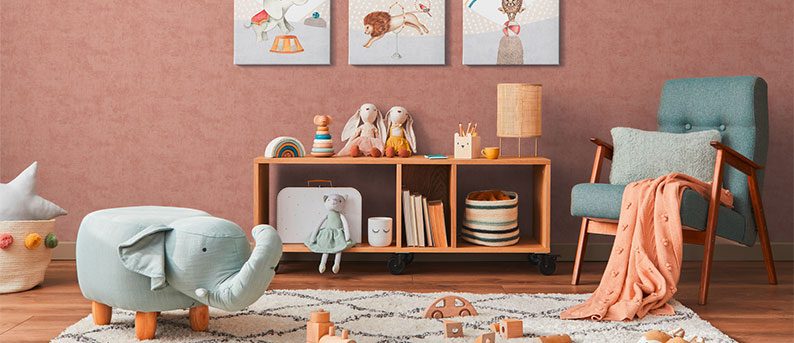Wallpapering made easy - your guide to perfect walls
Wallpapers are the perfect way to give your home an individual look. To ensure that wallpapering goes smoothly, we have summarized the most important steps and tips for you. Find out how to prepare the room, choose the right wallpaper and tackle the wallpapering project like a professional - it's really easy!
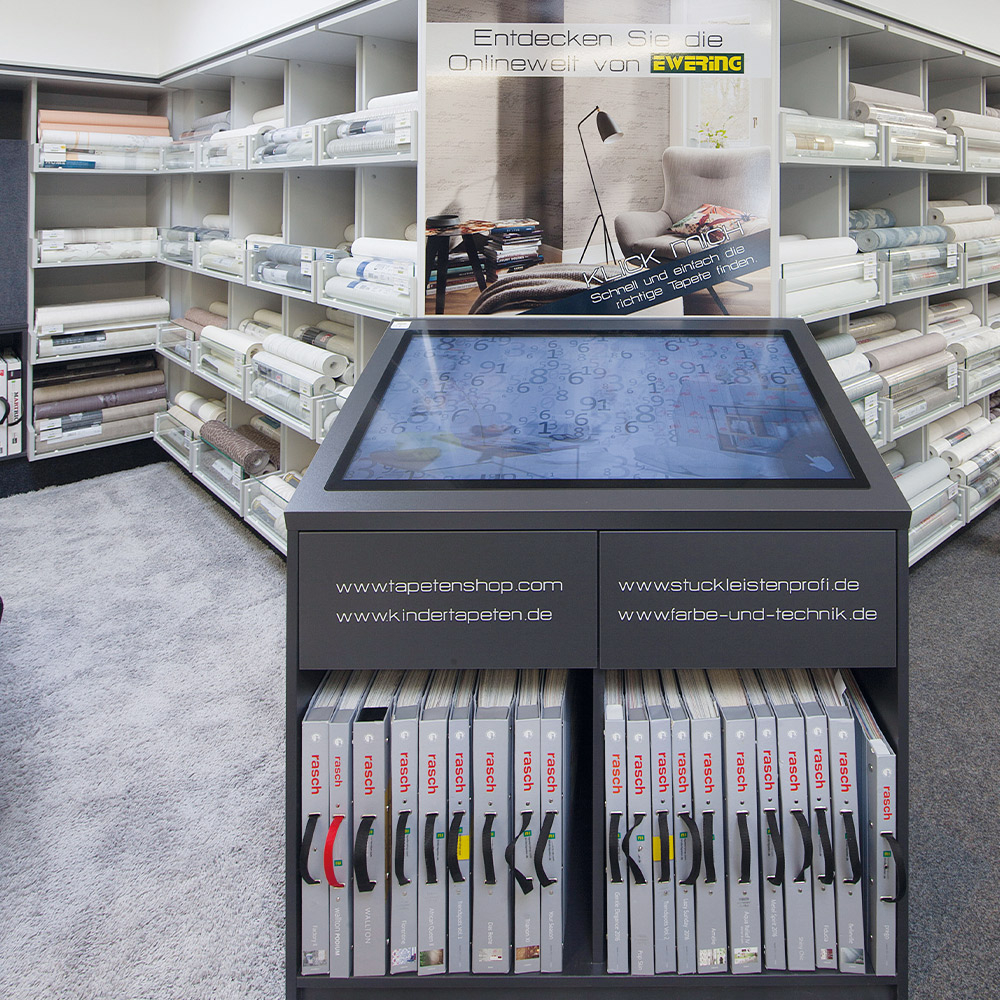
Find the right wallpaper
Think about what requirements your wallpaper should meet: breathable (e.g. paper wallpaper), wipe-proof (vinyl) or easy to apply (non-woven wallpaper). Tip: Non-woven wallpaper is particularly easy to work with - ideal for beginners.
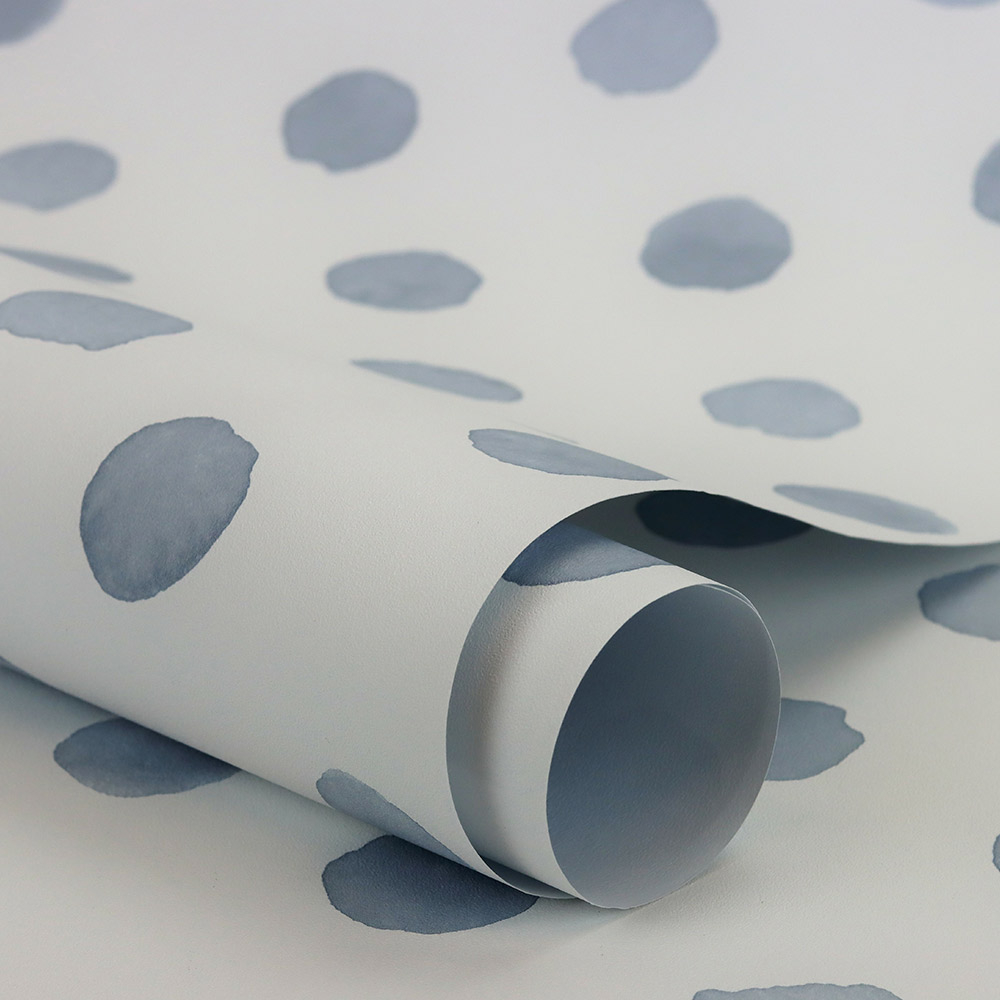
Calculate wallpaper requirements
Room height x room circumference ÷ 5 = number of rolls for wallpaper without a pattern. For patterned wallpaper: divide by 4 as there is more waste. Don't forget to plan a reserve roll for later repairs.
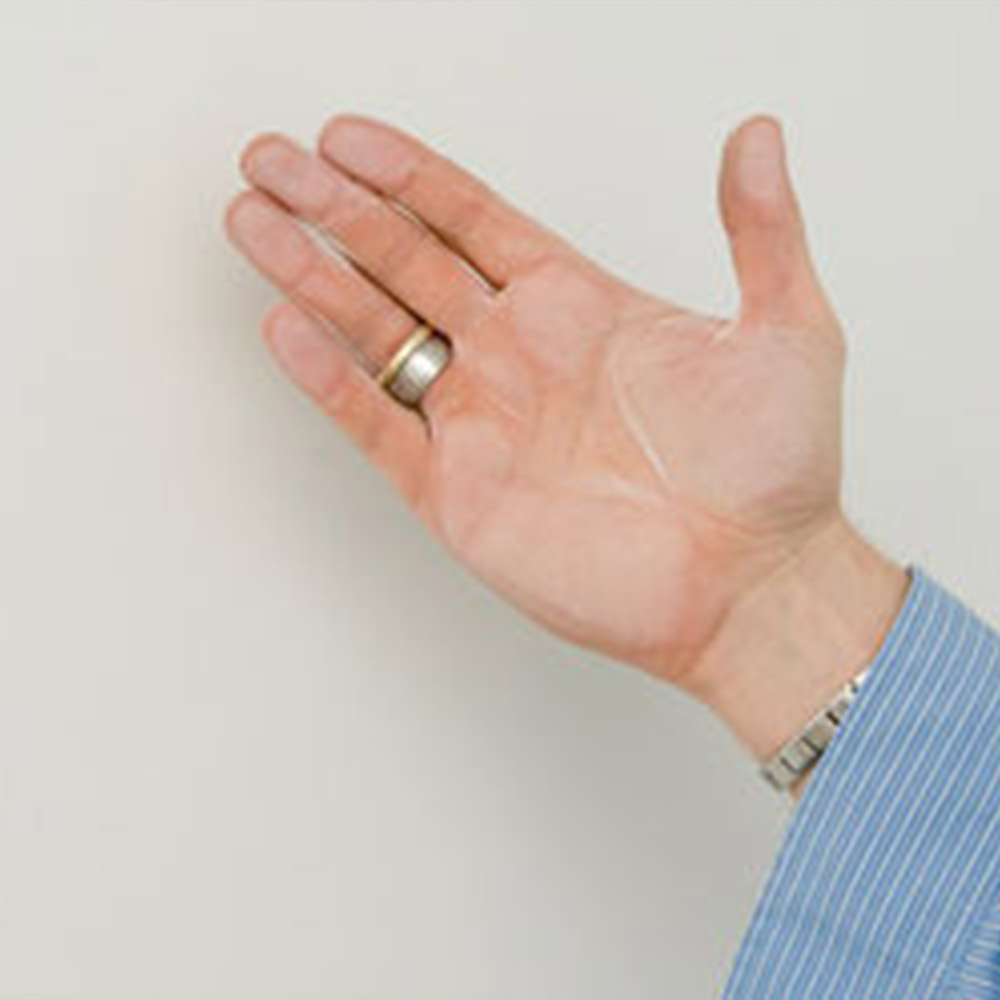
The right surface
Remove old wallpaper thoroughly. The surface must be clean, dry, smooth and stable. Level out any unevenness with filler and pre-treat with primer – particularly important for non-woven wallpaper to prevent it from showing through.
Overview table
This table helps you calculate the amount of wallpaper you need quickly and easily. It shows you at a glance how many rolls of wallpaper you need depending on the size of the room and the type of pattern. This way you are optimally prepared and avoid unnecessary waste!

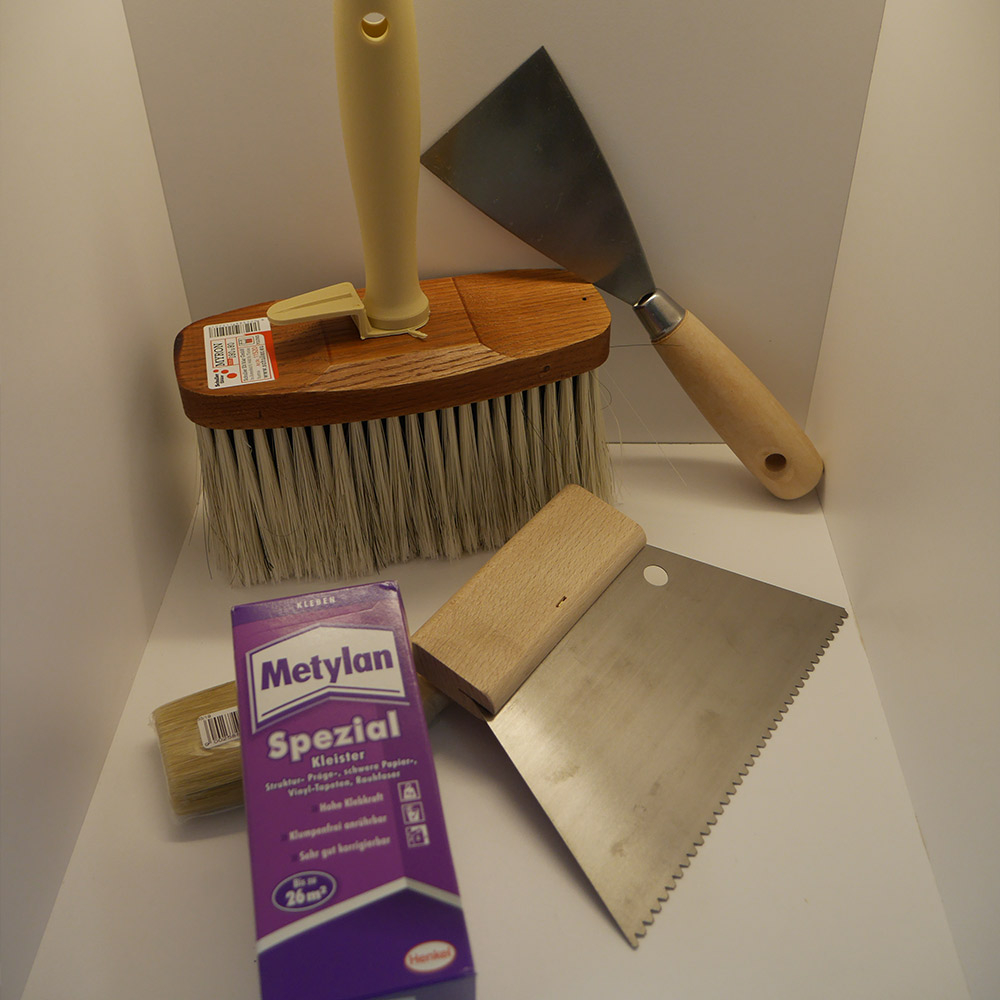
Tools
Wallpaper table, ladder, folding rule, cutter knife, seam roller, pressure spatula.
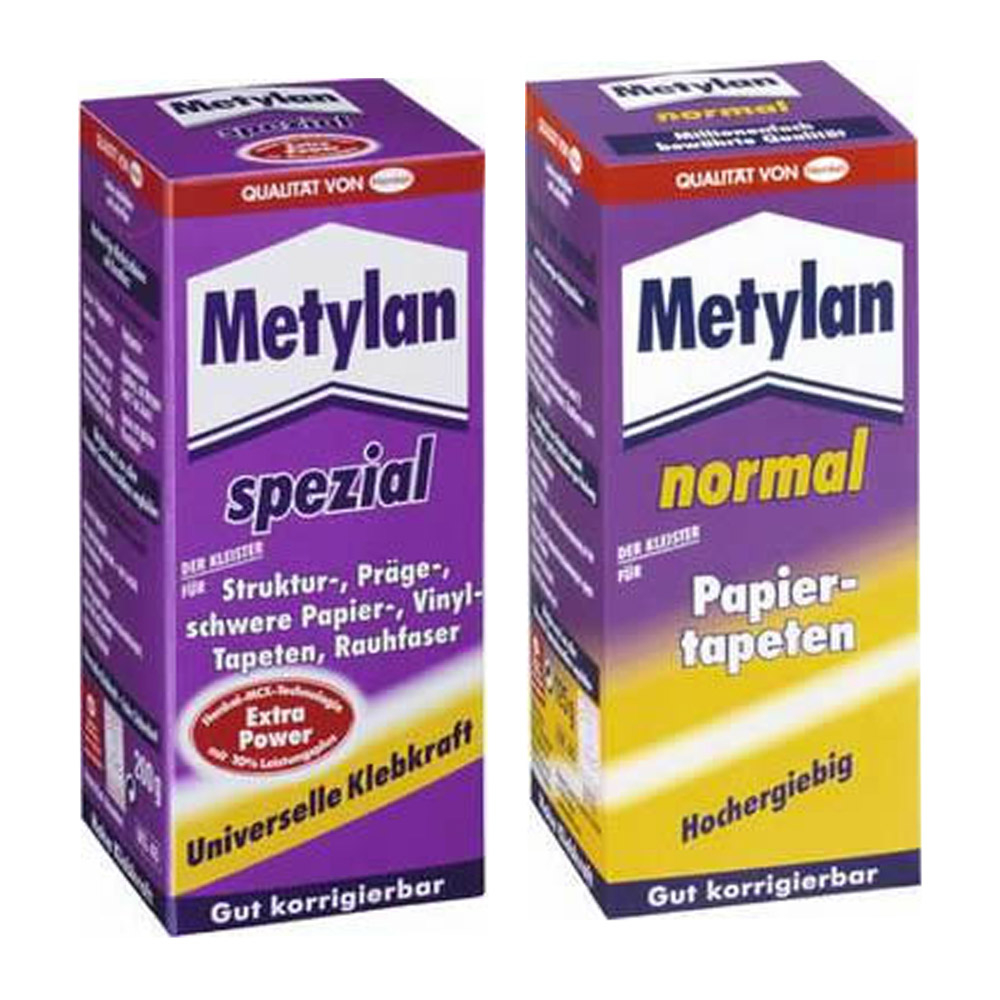
Glue
Choose glue that suits the type of wallpaper (e.g. special glue for non-woven wallpaper).
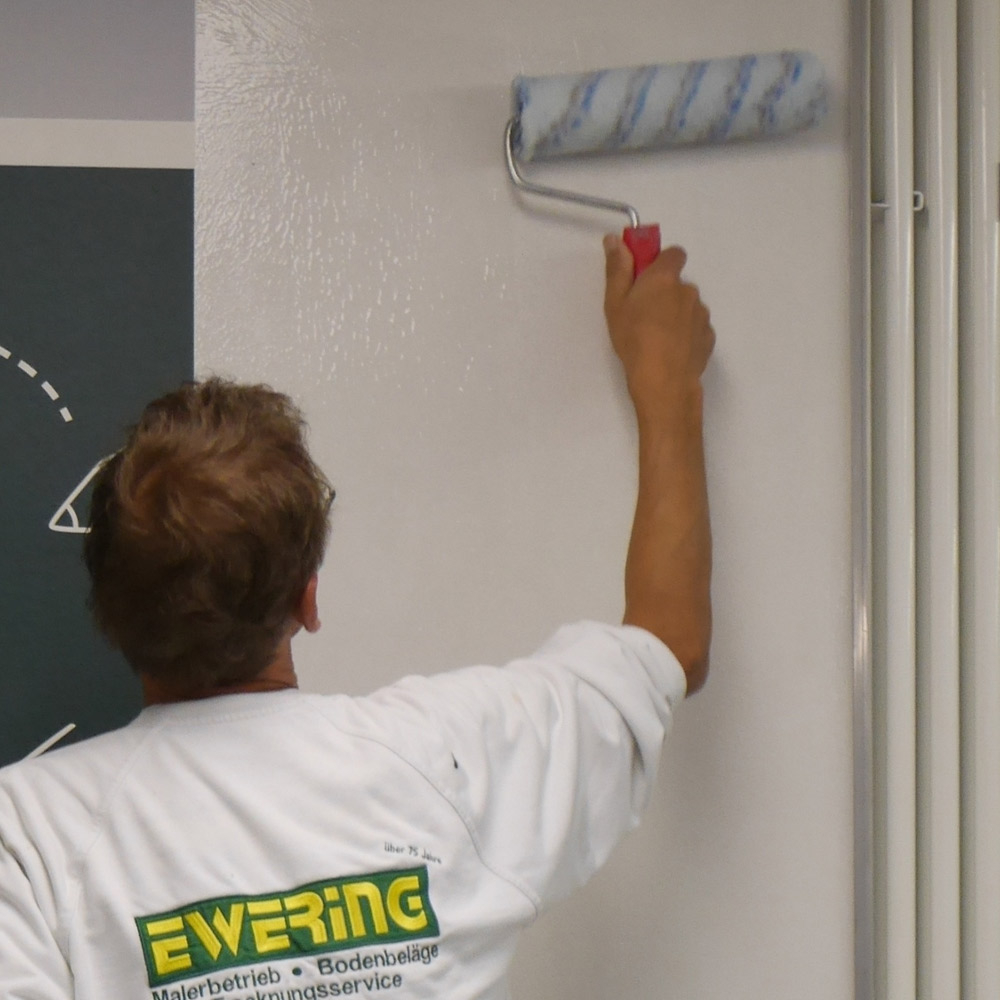
Extra tip
For non-woven wallpaper, apply the paste directly to the wall - without waiting.
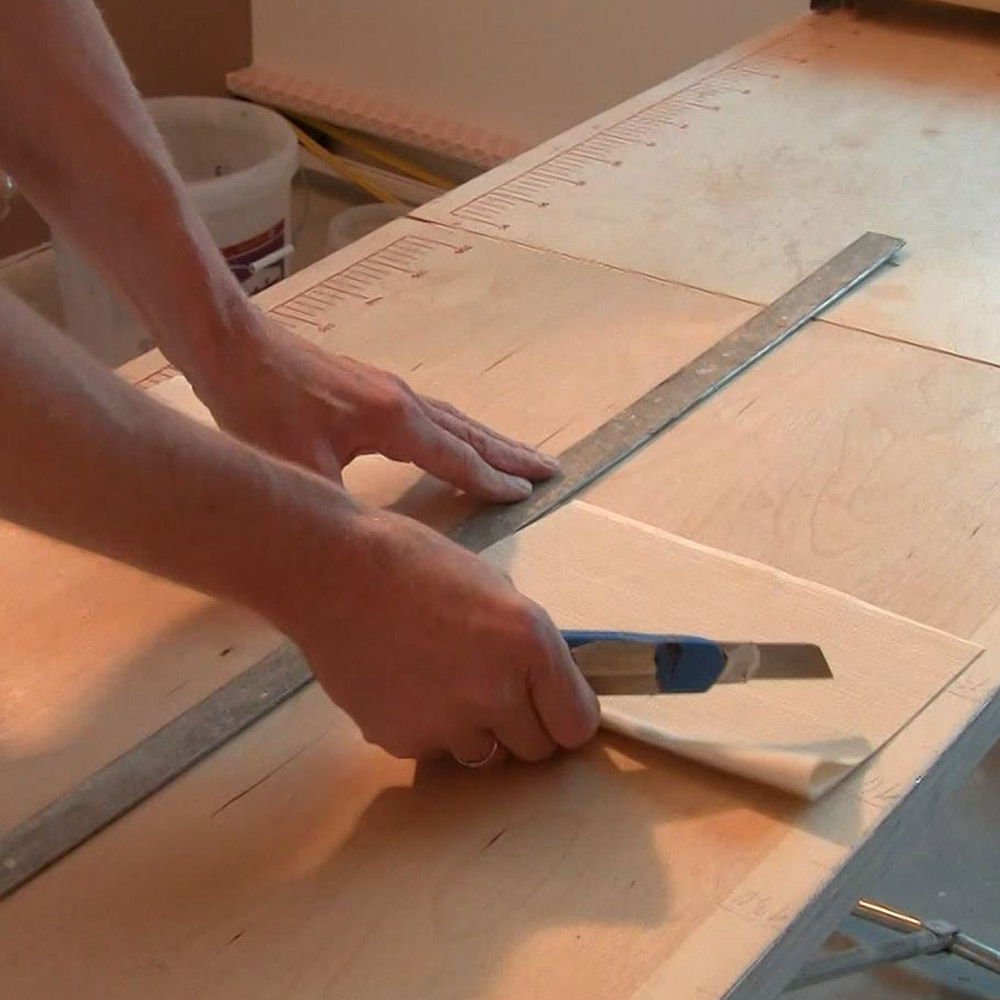
Step 1: Cut strip by strip
- Measure: Measure the height of the room and add 5-10 cm as a buffer.
- Pay attention to the pattern: Take the pattern repeat (offset) into account for patterned wallpaper.
Step 2: Apply paste
- Paper wallpaper: Apply paste evenly to the strips, fold them together and allow to soak for 5-10 minutes.
- Non-woven wallpaper: Apply paste directly to the wall - the strips remain dry.
Step 3: Apply wallpaper
- Align the first strip with a spirit level to ensure straight strips. Apply the strip from top to bottom and smooth it out with a wallpaper brush.
- Smooth out air bubbles and remove excess with a cutter knife.
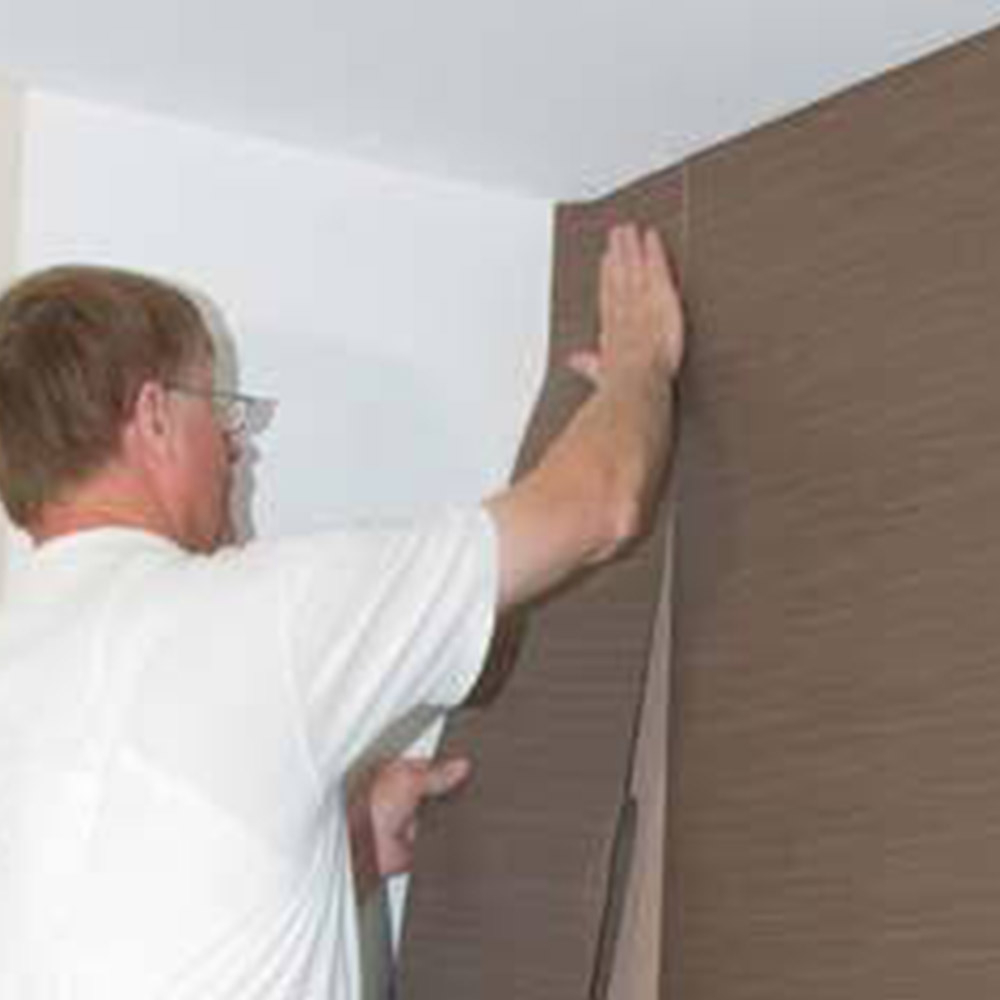
Corners & Ceilings
- Corners: Fold the wallpaper strip around the corner by about 2 cm, then realign the next strip.
- Ceilings: Draw lines to align the strips precisely. Tip: It is best to work in pairs.
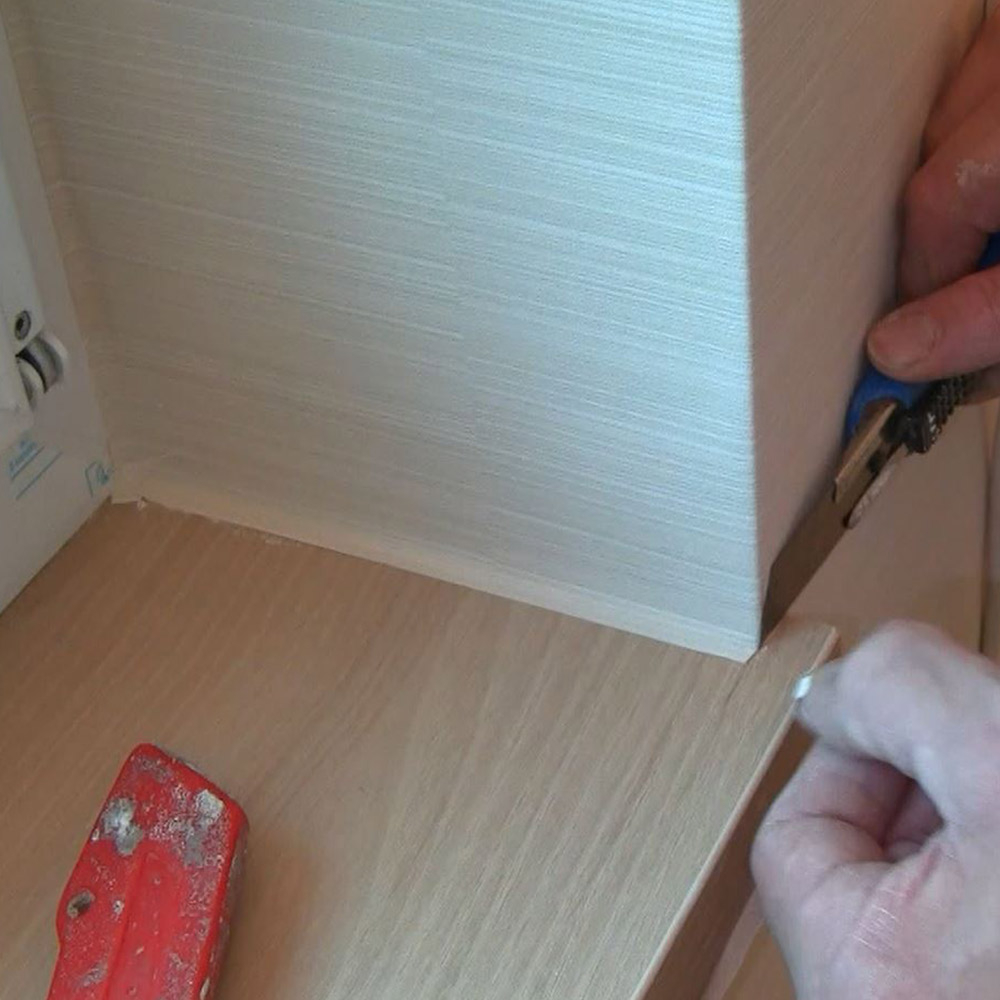
Window niches & doors
When wallpapering window niches and doors, precision is important. Cut the wallpaper strips at the edges, carefully fold over the excess and smooth them out.
Then cut off the excess neatly with a cutter knife.
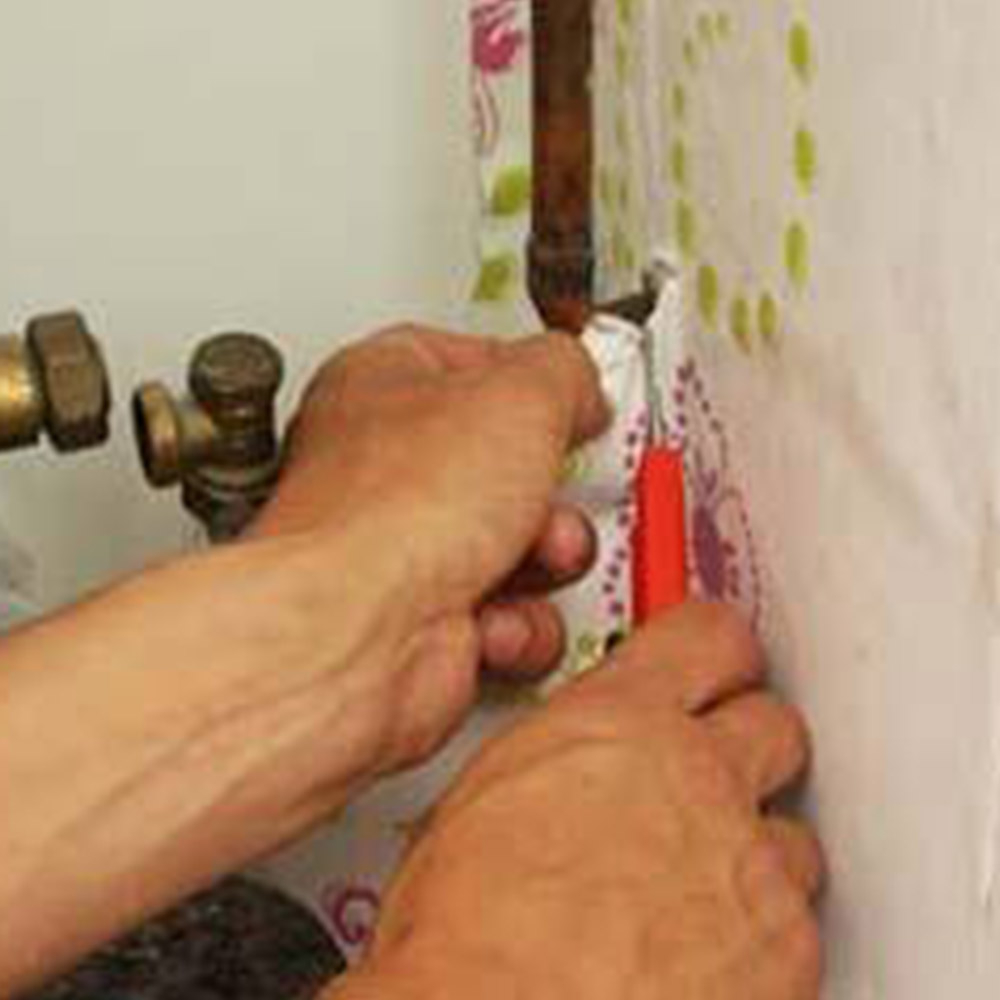
Behind radiators
Behind radiators, it is often sufficient to wallpaper only the visible areas to save material.
Alternatively, you can paint the area in a suitable color that matches the wallpaper for a harmonious overall look.
5. Professional tips for a perfect result
- Keep windows and doors closed while wallpapering to avoid drafts.
- Heat the room moderately to ensure even drying.
- Check the batch numbers of the rolls in advance to avoid color deviations.

